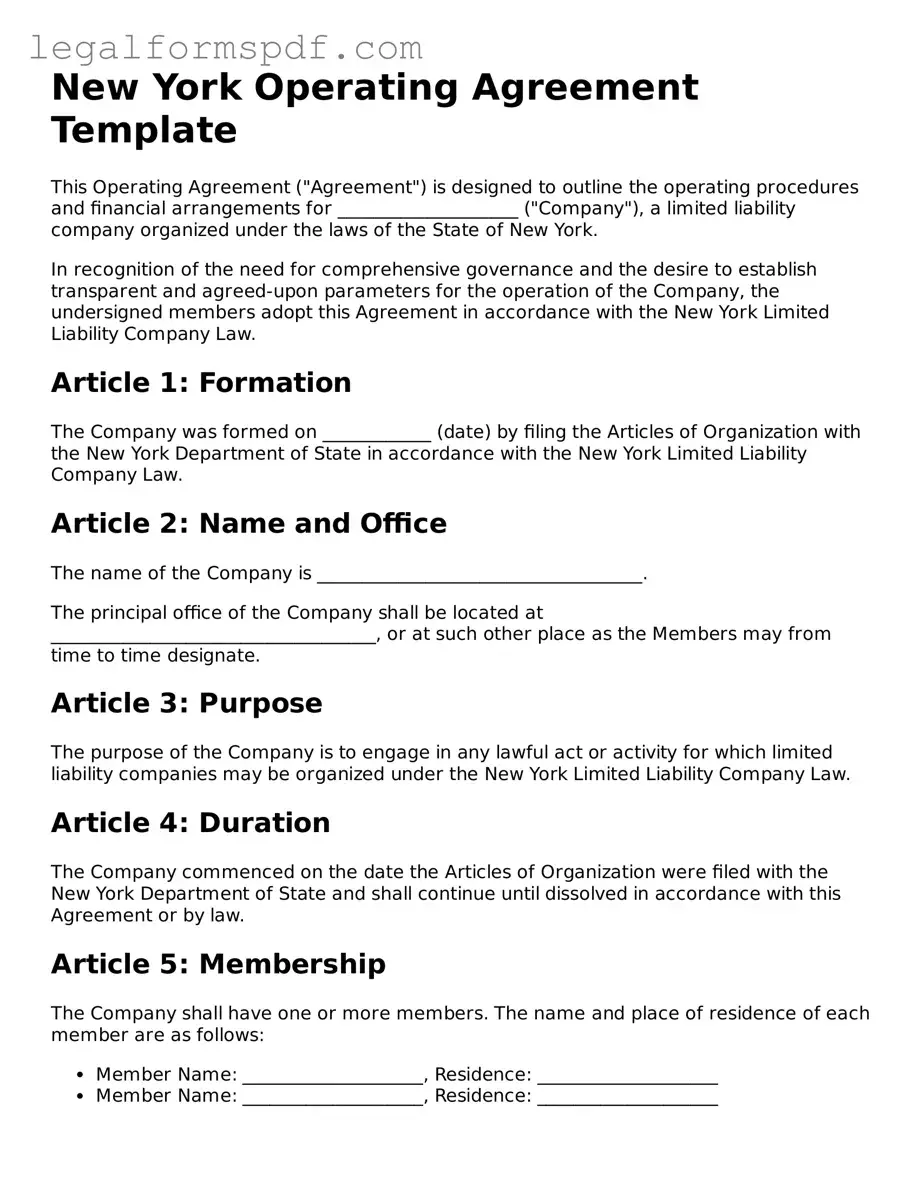New York Operating Agreement Template
This Operating Agreement ("Agreement") is designed to outline the operating procedures and financial arrangements for ____________________ ("Company"), a limited liability company organized under the laws of the State of New York.
In recognition of the need for comprehensive governance and the desire to establish transparent and agreed-upon parameters for the operation of the Company, the undersigned members adopt this Agreement in accordance with the New York Limited Liability Company Law.
Article 1: Formation
The Company was formed on ____________ (date) by filing the Articles of Organization with the New York Department of State in accordance with the New York Limited Liability Company Law.
Article 2: Name and Office
The name of the Company is ____________________________________.
The principal office of the Company shall be located at ____________________________________, or at such other place as the Members may from time to time designate.
Article 3: Purpose
The purpose of the Company is to engage in any lawful act or activity for which limited liability companies may be organized under the New York Limited Liability Company Law.
Article 4: Duration
The Company commenced on the date the Articles of Organization were filed with the New York Department of State and shall continue until dissolved in accordance with this Agreement or by law.
Article 5: Membership
The Company shall have one or more members. The name and place of residence of each member are as follows:
- Member Name: ____________________, Residence: ____________________
- Member Name: ____________________, Residence: ____________________
Article 6: Contributions
The Members have contributed capital to the Company as described below:
- Member Name: ____________________, Contribution: ____________________
- Member Name: ____________________, Contribution: ____________________
Article 7: Distributions
Distributions shall be made to the Members at the times and in the amounts as agreed by the Members in accordance with their capital accounts, as maintained by the Company for each Member.
Article 8: Management
The Company shall be managed by its Members. The rights and responsibilities of the Members, including any limitations therein, shall be as outlined in this Agreement.
Article 9: Voting
Each Member shall be entitled to vote on matters submitted to the members in proportion to their respective capital accounts. Matters shall be decided by a majority of the votes cast, unless otherwise required by this Agreement or applicable law.
Article 10: Amendments
This Agreement may be amended only by a written agreement signed by all Members.
Article 11: Governing Law
This Agreement shall be governed by and construed in accordance with the laws of the State of New York.
IN WITNESS WHEREOF, the Members have executed this Operating Agreement as of the ______ day of ____________, ______.
_____________________________________
Member Signature
_____________________________________
Member Signature
Add more signatures as needed
